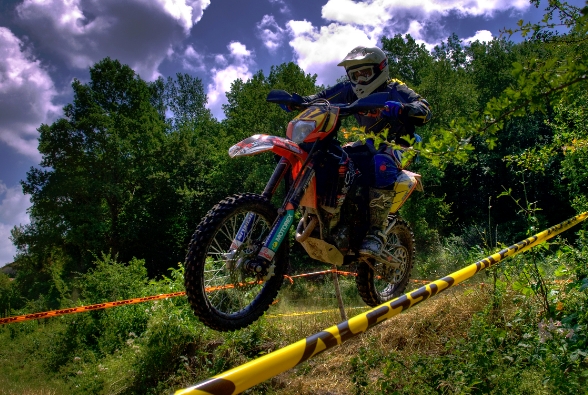Learn About Bicycling By Getting A Motorcycle Permit
Last Friday I took (and passed) the test that allows me to legally drive a motorcycle in the state of Utah. But before I took the test, I stayed up all night long reading the DMV’s Motorcycle Operator Manual – and in the process realized that riding a bicycle has taught me a lot about how to handle and operate a motorcycle.

Equipment
First of all, the equipment is all very familiar. Lights and reflectors on both the front and back of the bike are required for a motorcycle, while they are largely optional on bikes. However, the helmet and gloves that many bicyclists see as mandatory are optional in the state of Utah for adult motorcycle riders (although they are highly recommended).
Another interesting note from the Motorcycle Operators Manual is that your body and the clothes you wear while riding a motorcycle make up half of the visible surface area of you and your bike. The bike makes up the other half. This is something I’ve never heard for bicyclists, but I think it might be especially true for traveling cyclists who ride with panniers, as the pannier material is sizable enough that it could very well make up half (or more) of the surface area that cars see when they whiz past.
Another similarity is the recommendation that you use mirrors to see both behind and to the side of your bike.
Finally, the front brake on both a bicycle and a motorcycle provides most of the stopping power. However, when braking you should use both your front and rear brakes.
Accidents
Very similar to bicycling, most motorcycle accidents happen within 5 miles of starting out and many of these accidents occur at intersections.
The most common reason for an accident is not collision with another motorized vehicle, but simply making too wide of a turn at too high of a speed. Most motorcycle/bicycle accidents occur when the rider is traveling at low speeds.
See, Search, Evaluate, Execute
When riding a bicycle or motorcycle, you need to be visible, communicate your intentions, maintain an adequate space cushion between you and the vehicles around you, scan the path ahead of you, identify and separate potential hazards, and be prepared to act. If you see a situation approaching that could be potentially dangerous, you should be prepared to react to a dangerous situation by covering both the brake and the clutch (or in the case of a bicyclist, be prepared by covering both brakes).
Be Brave And Take The Lane
Finally, when riding a bicycle or motorcycle, you can’t be afraid to take the lane. You should always ride in a position that keeps you safe from the vehicles around you. Beware of wind blasts from larger vehicles and if you are being followed too closely, pull over and let the vehicle(s) behind you pass. Additionally, get out of drivers’ blind spots as soon as you possibly can and watch for car doors opening quickly. Beware of items that could be thrown from the vehicles around you and never take eye contact from a driver as a sign that they will yield to you.
There are probably a lot more similarities between bicycling and riding a motorcycle, but these a few of the things that stood out to me while studying my permit test material. And if, after all of this, you still don’t believe that riding a bicycle can teach you a lot about operating a motorcycle, just look at this quote from the last line on the Utah Rider Education Course website:
We also recommend riding a bicycle as much as you can before the class. It’s a great way get reacquainted with two-wheeled vehicles.
Photo by Mirko Macari


My understanding was that in all/most states front and rear reflectors were mandatory and, in most states, if you were riding after dark then front lights were required. Some states require rear lights too.
Though, as always, your mileage may vary.
Could motorcycletouringpro.com be a sister-site in the future?!?